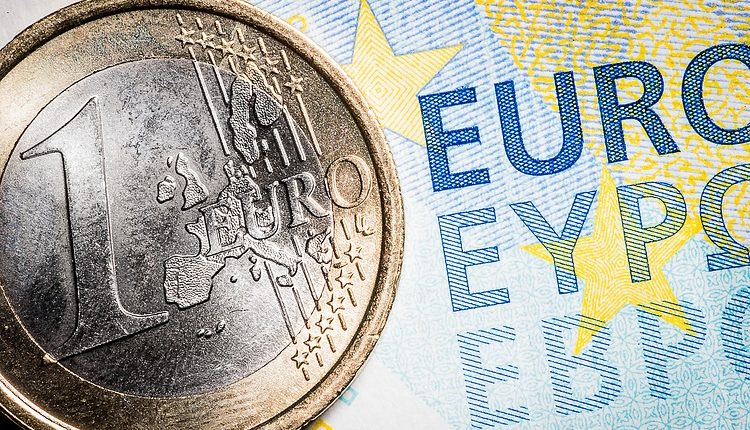- The Euro trades in an inconclusive fashion against the US Dollar.
- Stocks in Europe reverse the negative start of the session.
- EUR/USD so far struggles to gather fresh upside traction.
- The USD Index (DXY) trades close to monthly lows around 105.70.
- Final CPI in Germany rose 4.5% YoY, 0.3% MoM in September.
- US Producer Prices, FOMC Minutes take centre stage later in the session.
The Euro (EUR) alternates gains with losses against the US Dollar (USD) on Wednesday, motivating EUR/USD to trade without a clear direction around the 1.0600 neighbourhood.
The Greenback remains under pressure below the 106.00 hurdle when measured by the USD Index (DXY) on the back of a better tone in risk markets, while investors continue to digest the recent dovish messages from Federal Reserve (Fed) officials.
In terms of monetary policy, investors presently expect the Fed to keep interest rates at their current levels for the rest of the year. Market participants are also speculating on the prospect of the European Central Bank (ECB) pausing policy changes, despite inflation levels above the bank’s objective and rising fears about the risk of a future recession or stagflation in the European area.
On the domestic calendar, final inflation figures in Germany saw the CPI rise at an annualized 4.5% in the year to September and 0.3% compared with the previous month.
Data-wise in the US, the usual weekly Mortgage Applications tracked by MBA are due in the first turn seconded by September’s Producer Prices and the publication of the FOMC Minutes of the September meeting, when the Fed kept its interest rates unchanged.
Daily digest market movers: Euro trades in a cautious tone ahead of data
- The EUR alternates ups and downs against the USD.
- US and German yields accelerate the downward bias on Wednesday.
- Markets expect the Fed will keep interest rates on hold in the coming months.
- Investors suggest the ECB will extend the pause of its rate hike campaign.
- Geopolitical concerns remain on the rise around the Middle East.
Technical Analysis: Euro faces a minor up-barrier at 1.0736
EUR/USD appears poised to consolidate the recent breakthrough of the pivotal barrier at 1.0600.
Continued upward momentum could potentially propel EUR/USD to revisit the September 20 high of 1.0736, followed by the significant 200-day Simple Moving Average (SMA) at 1.0823. If the pair manages to break above this level, there is potential for testing the August 30 peak at 1.0945 and approaching the psychological threshold of 1.1000. Further breakthroughs beyond the August 10 peak of 1.1064 may lead the pair to the July 27 top at 1.1149 and potentially reach the 2023 peak of 1.1275 from July 18.
Conversely, if selling pressure resumes, there is a possibility of retesting the 2023 low at 1.0448 from October 3 and potentially challenging the significant psychological level of 1.0400. Should this level be breached, it could pave the way for a retest of the weekly lows at 1.0290 (November 30, 2022) and 1.0222 (November 21, 2022).
As long as the EUR/USD remains below the 200-day SMA, the potential for sustained downward pressure persists.
ECB FAQs
The European Central Bank (ECB) in Frankfurt, Germany, is the reserve bank for the Eurozone. The ECB sets interest rates and manages monetary policy for the region.
The ECB primary mandate is to maintain price stability, which means keeping inflation at around 2%. Its primary tool for achieving this is by raising or lowering interest rates. Relatively high interest rates will usually result in a stronger Euro and vice versa.
The ECB Governing Council makes monetary policy decisions at meetings held eight times a year. Decisions are made by heads of the Eurozone national banks and six permanent members, including the President of the ECB, Christine Lagarde.
In extreme situations, the European Central Bank can enact a policy tool called Quantitative Easing. QE is the process by which the ECB prints Euros and uses them to buy assets – usually government or corporate bonds – from banks and other financial institutions. QE usually results in a weaker Euro.
QE is a last resort when simply lowering interest rates is unlikely to achieve the objective of price stability. The ECB used it during the Great Financial Crisis in 2009-11, in 2015 when inflation remained stubbornly low, as well as during the covid pandemic.
Quantitative tightening (QT) is the reverse of QE. It is undertaken after QE when an economic recovery is underway and inflation starts rising. Whilst in QE the European Central Bank (ECB) purchases government and corporate bonds from financial institutions to provide them with liquidity, in QT the ECB stops buying more bonds, and stops reinvesting the principal maturing on the bonds it already holds. It is usually positive (or bullish) for the Euro.
Read the full article here

